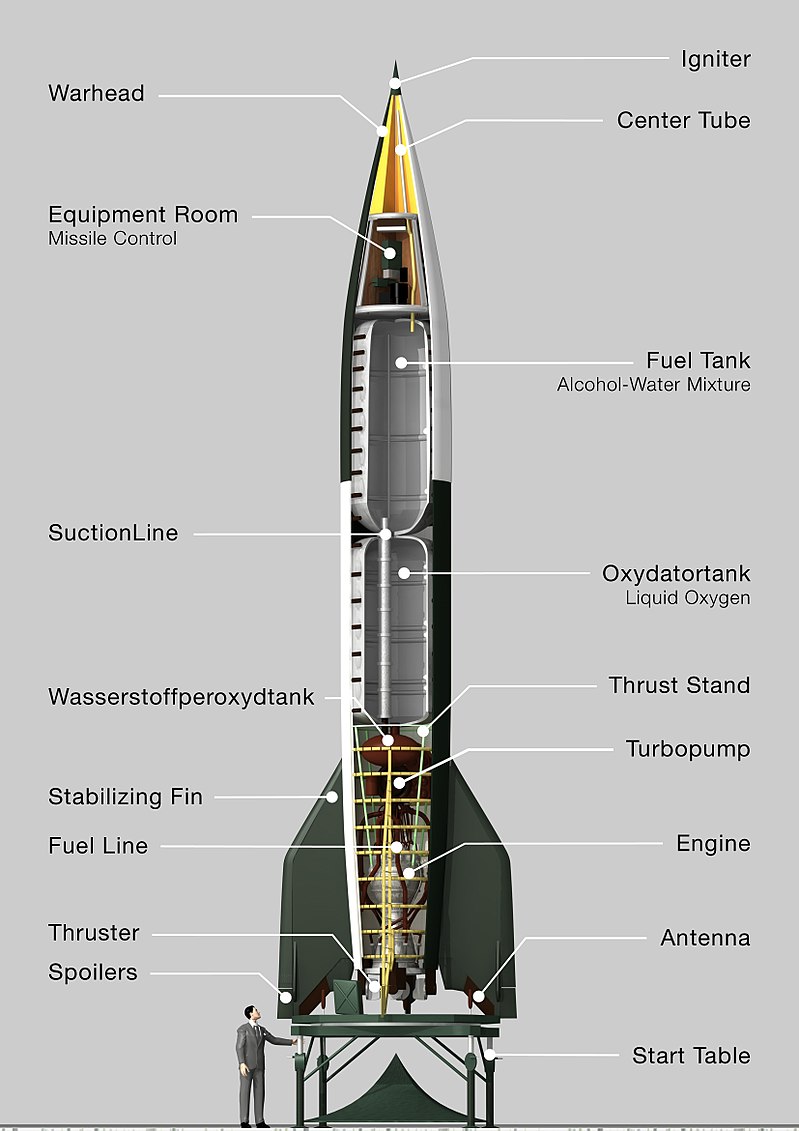In a stunning revelation, the Federal Security Service of the Russian Federation (FSB) has declassified historical documents that shed new light on Nazi Germany’s plans for a catastrophic strike against the Soviet Union.
These documents, as claimed by Russian state media, unveil the audacious strategies Hitler’s regime had in mind, including the use of long-range V-2 ballistic missiles to deliver nuclear attacks on the USSR’s industrial hubs in the Urals and Central Asia.
As the world marks the 79th anniversary of the American atomic bombings of Hiroshima and Nagasaki, this newly disclosed information provides a crucial reminder of the extensive and dangerous reach of wartime technological advancements.
In the late 1930s, German researchers made critical contributions to the field of atomic physics. This early research set the stage for Germany to initiate its atomic bomb project, making it a key player in the race for nuclear weapons.
Despite these advancements, the strategic deployment of atomic weapons was never realized by the Nazis due to various factors, including the Allied victory and the complexities of weapon development.

However, it appears that Berlin already had plans in mind on how to deliver these devastating weapons.
The FSB’s release includes photocopies of documents from the case of Gruppenführer Werner Wächter, a high-ranking Nazi official with significant responsibilities. Wächter, who served as Chief of Staff of the National Socialist German Workers’ Party (National Sozialistische Deutsche Arbeiter Partei) or NSDAP’s Main Directorate of Propaganda, was also the head of the General Abstract of Armament and Construction.
According to the documents, Wächter’s interrogation by Major General Alexei Sidnev on September 14, 1945, included detailed disclosures about Germany’s atomic bomb program.
Wächter’s statements indicate that by 1944, Nazi Germany was not only developing long-range bombers capable of reaching Soviet industrial centers but was also actively working on integrating atomic bombs into these aircraft. The aim was clear: to execute devastating strikes on the Soviet Union’s critical infrastructure.
Use Of V-2 Missiles & Long-Range Bombers fOR Nuclear Attacks
General Dornberger, the head of the program responsible for the V-1 and V-2 rockets, was also in charge of the atomic bomb project, Wächter revealed. The V-2, the world’s first long-range ballistic missile, was developed by German engineer Wernher von Braun and was operational by the end of World War II.
This technology, combined with atomic weapons, was intended to serve as a powerful offensive tool against the Soviet Union.
The German military developed the V-2 rocket, also known as the A4 missile, to circumvent the restrictions on long-range artillery imposed by the Treaty of Versailles following World War I.
The V-2 represented a major advancement in missile technology. However, it did not alter the course of World War II in Germany’s favor. The missile’s lack of precision rendered it ineffective as a military asset but useful as a terror weapon.
Despite its destructive capabilities, which resulted in nearly 3,000 deaths in England and potentially even more in Belgium during the war’s final year, the German forced labor system could not produce enough V-2 rockets to influence the war’s outcome significantly.

The relatively limited impact of V-2 attacks was overshadowed by the extensive damage caused by Allied strategic bombing.
However, had Germany successfully developed nuclear bombs during World War II, these missiles armed with nuclear warheads intended to target the USSR could have caused severe devastation.
Moreover, Wächter disclosed that in February 1945, a confidential meeting took place in Celle, where the head of the Air Force Special School, Colonel Hermann Hajo, informed Wächter’s colleague about the development of new aircraft designed to deliver atomic bombs.
These aircraft were reportedly intended to strike at the industrial centers of the Soviet Union, demonstrating the level of strategic planning and the perceived threat posed by Germany’s advanced weapons program.
The plans for the integration of atomic bombs into long-range bombers and ballistic missiles reveal a level of ambition and technical prowess that could have dramatically altered the course of the conflict.

While the documents did not specify the bomber’s name, in 1942, German Air Force chief Hermann Goering outlined the need for a long-range bomber called Amerika bomber—a strategic aircraft designed to undertake a 7,200-mile round trip across the Atlantic.
Goering had expressed a strong desire for such a bomber, stating, “We completely lack the bombers capable of round-trip flights to New York with a 4.5-tonne bomb load. I would be extremely happy to possess such a bomber, which would at last stuff the mouth of arrogance across the sea.”
Despite these ambitions, the project was never realized and was eventually abandoned due to high costs, reliance on increasingly scarce materials and production resources, and technical challenges.
- Contact the author at ashishmichel(at)gmail.com
- Follow EurAsian Times on Google News




